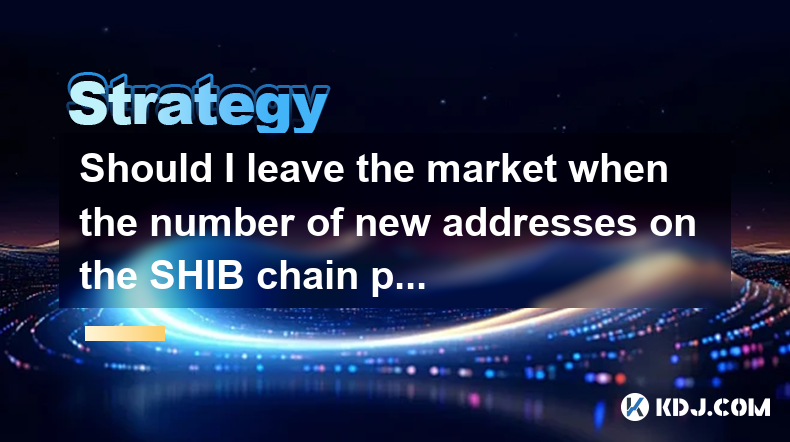-
 Bitcoin
Bitcoin $87,772.6996
0.99% -
 Ethereum
Ethereum $1,570.5330
-2.49% -
 Tether USDt
Tether USDt $1.0000
0.01% -
 XRP
XRP $2.0836
-1.10% -
 BNB
BNB $599.1765
0.07% -
 Solana
Solana $138.0201
-2.11% -
 USDC
USDC $0.9999
0.01% -
 Dogecoin
Dogecoin $0.1599
0.63% -
 TRON
TRON $0.2467
0.31% -
 Cardano
Cardano $0.6233
-1.67% -
 Chainlink
Chainlink $13.1154
-2.78% -
 UNUS SED LEO
UNUS SED LEO $9.1017
-1.66% -
 Avalanche
Avalanche $19.7493
-1.09% -
 Stellar
Stellar $0.2496
0.02% -
 Toncoin
Toncoin $2.9084
-3.65% -
 Shiba Inu
Shiba Inu $0.0...01230
-2.09% -
 Sui
Sui $2.2248
2.27% -
 Hedera
Hedera $0.1694
-0.70% -
 Bitcoin Cash
Bitcoin Cash $342.3982
0.49% -
 Hyperliquid
Hyperliquid $18.1794
-0.12% -
 Litecoin
Litecoin $78.6773
-0.19% -
 Polkadot
Polkadot $3.7586
-4.30% -
 Dai
Dai $0.9998
-0.02% -
 Bitget Token
Bitget Token $4.4381
-1.01% -
 Ethena USDe
Ethena USDe $0.9992
0.01% -
 Pi
Pi $0.6309
-1.94% -
 Monero
Monero $214.9808
-0.07% -
 Uniswap
Uniswap $5.2523
-2.33% -
 Pepe
Pepe $0.0...07838
1.42% -
 OKB
OKB $50.7171
-0.70%
How to backtest Bitcoin trading strategy?
Backtesting plays a pivotal role in evaluating the performance and robustness of Bitcoin trading strategies, allowing traders to gauge their effectiveness before implementing them in live markets.
Feb 26, 2025 at 08:54 am

Key Points:
- Understanding the importance of backtesting
- Steps involved in backtesting a Bitcoin trading strategy
- Data sources and indicators to use
- Common pitfalls to avoid
- FAQs on backtesting Bitcoin trading strategies
How to Backtest a Bitcoin Trading Strategy
Backtesting is a crucial step in developing a successful Bitcoin trading strategy. It allows you to test your strategy on historical data to assess its performance and identify potential areas for improvement.
1. Gather Data
The first step is to gather historical Bitcoin price data. This data can be obtained from reputable sources such as CoinMarketCap or Binance. Select a time frame that aligns with your trading strategy's timeframe, such as daily, weekly, or hourly data.
2. Choose Indicators
Indicators are mathematical calculations that help identify trends, patterns, and trading opportunities in price data. Select indicators that align with your trading strategy and provide insights into market trends. Common indicators include moving averages, Bollinger Bands, and Relative Strength Index (RSI).
3. Define Entry and Exit Criteria
Based on the indicators you have chosen, define clear entry and exit criteria for your trading strategy. This includes specifying when to buy or sell Bitcoin and under what specific conditions. Ensure that your criteria are specific and objective to avoid subjective interpretations.
4. Optimize Parameters
Most trading strategies have parameters that can be adjusted to optimize performance. These parameters could include moving average periods, Bollinger Band deviations, or RSI thresholds. Backtest your strategy with different parameter values to identify the settings that yield the best results.
5. Test on Multiple Time Frames
Backtest your strategy across multiple time frames to assess its performance under different market conditions. This will help you gauge the robustness and adaptability of your strategy over various time scales.
6. Evaluate Performance
After backtesting your strategy, evaluate its performance using relevant metrics such as profit factor, winning percentage, and drawdown. Quantifying these metrics allows you to compare different strategies and make informed decisions about their effectiveness.
7. Incorporate Transaction Costs and Slippage
Real-world trading involves transaction costs and slippage, which can impact your strategy's profitability. To enhance the accuracy of your backtests, incorporate these factors into your calculations.
8. Avoid Overfitting
Ensure that your trading strategy is not overfitted to the historical data you used for backtesting. Overfitting occurs when a strategy is optimized to perform well on past data but fails to generalize to different market conditions.
FAQs:
- What is the minimum amount of data required for backtesting a Bitcoin trading strategy?
The amount of data required depends on the time frame of your strategy. Aim for at least 1000 data points for hourly strategies and 365 data points for daily strategies.
- Is it necessary to optimize the parameters of a trading strategy?
Optimizing parameters can enhance a strategy's performance. However, over-optimizing can lead to overfitting and poor out-of-sample performance.
- How often should I backtest my Bitcoin trading strategy?
Backtesting should be done regularly, especially after significant market events or changes in market conditions. This helps ensure that your strategy remains effective in the evolving market environment.
Disclaimer:info@kdj.com
The information provided is not trading advice. kdj.com does not assume any responsibility for any investments made based on the information provided in this article. Cryptocurrencies are highly volatile and it is highly recommended that you invest with caution after thorough research!
If you believe that the content used on this website infringes your copyright, please contact us immediately (info@kdj.com) and we will delete it promptly.
- The Next 100x Meme Coin Isn't Even Listed Yet: Trolling the Cat Market
- 2025-04-22 08:40:13
- Pepe Coin (PEPE) Price Prediction: Will the Memecoin Breakout?
- 2025-04-22 08:40:13
- SUI Could Rally 28%, AVAX Bulls Take Control—But Web3 ai's AI Tools Are Built to Outlast Them Both
- 2025-04-22 08:35:13
- Tron (TRX) Emerges as the Top Stablecoin Destination, Bringing in $623 Million
- 2025-04-22 08:35:13
- Apart from cryptocurrencies, NFTs are another popular market
- 2025-04-22 08:30:12
- Top 10 Trending Cryptos on DEXTools in April 2025
- 2025-04-22 08:30:12
Related knowledge

What to do if SHIB's HODL wave indicator shows loose chips?
Apr 21,2025 at 03:07pm
If the SHIB's HODL wave indicator shows loose chips, it suggests that a significant portion of the SHIB holders are selling their tokens, potentially leading to increased volatility and a possible price drop. Understanding how to navigate this situation is crucial for any SHIB investor. This article will guide you through the steps to take when you noti...

Is it a risk that SHIB's derivatives position is 3 times that of the spot?
Apr 20,2025 at 12:35am
Is it a risk that SHIB's derivatives position is 3 times that of the spot? The cryptocurrency market is known for its volatility and high-risk nature, and Shiba Inu (SHIB) is no exception. One of the metrics that traders and investors closely monitor is the ratio of derivatives to spot positions. SHIB's derivatives position being three times that of the...

What does SHIB's Cardano coefficient below 0.3 indicate?
Apr 19,2025 at 08:00am
What does SHIB's Cardano coefficient below 0.3 indicate? The Cardano coefficient, often used within the cryptocurrency community, is a metric that helps investors and analysts understand the correlation between different cryptocurrencies. When it comes to SHIB (Shiba Inu) and its Cardano coefficient falling below 0.3, this indicates a relatively low cor...

Is SHIB's TVL suddenly increasing by 20% a positive signal?
Apr 20,2025 at 08:07am
The sudden increase of SHIB's TVL (Total Value Locked) by 20% has sparked a lot of interest and speculation within the cryptocurrency community. TVL is an important metric that represents the total amount of assets locked in a DeFi protocol, indicating the level of user engagement and trust in the platform. In this article, we will explore whether this ...

What does SHIB's exchange inventory ratio hit a new low mean?
Apr 21,2025 at 02:50am
The term 'exchange inventory ratio' refers to the percentage of a cryptocurrency's total supply that is held on exchanges. When we say that SHIB's exchange inventory ratio hit a new low, it means that the proportion of Shiba Inu (SHIB) tokens held on cryptocurrency exchanges has reached its lowest point in a given period. This metric is significant beca...

Should I leave the market when the number of new addresses on the SHIB chain plummets by 30%?
Apr 22,2025 at 05:14am
The decision to stay in or leave the market when the number of new addresses on the SHIB chain drops by 30% is a complex one that requires a thorough understanding of the cryptocurrency market dynamics, the specific behavior of the SHIB token, and your own investment strategy. Let's delve into the details to help you make an informed decision. Understan...

What to do if SHIB's HODL wave indicator shows loose chips?
Apr 21,2025 at 03:07pm
If the SHIB's HODL wave indicator shows loose chips, it suggests that a significant portion of the SHIB holders are selling their tokens, potentially leading to increased volatility and a possible price drop. Understanding how to navigate this situation is crucial for any SHIB investor. This article will guide you through the steps to take when you noti...

Is it a risk that SHIB's derivatives position is 3 times that of the spot?
Apr 20,2025 at 12:35am
Is it a risk that SHIB's derivatives position is 3 times that of the spot? The cryptocurrency market is known for its volatility and high-risk nature, and Shiba Inu (SHIB) is no exception. One of the metrics that traders and investors closely monitor is the ratio of derivatives to spot positions. SHIB's derivatives position being three times that of the...

What does SHIB's Cardano coefficient below 0.3 indicate?
Apr 19,2025 at 08:00am
What does SHIB's Cardano coefficient below 0.3 indicate? The Cardano coefficient, often used within the cryptocurrency community, is a metric that helps investors and analysts understand the correlation between different cryptocurrencies. When it comes to SHIB (Shiba Inu) and its Cardano coefficient falling below 0.3, this indicates a relatively low cor...

Is SHIB's TVL suddenly increasing by 20% a positive signal?
Apr 20,2025 at 08:07am
The sudden increase of SHIB's TVL (Total Value Locked) by 20% has sparked a lot of interest and speculation within the cryptocurrency community. TVL is an important metric that represents the total amount of assets locked in a DeFi protocol, indicating the level of user engagement and trust in the platform. In this article, we will explore whether this ...

What does SHIB's exchange inventory ratio hit a new low mean?
Apr 21,2025 at 02:50am
The term 'exchange inventory ratio' refers to the percentage of a cryptocurrency's total supply that is held on exchanges. When we say that SHIB's exchange inventory ratio hit a new low, it means that the proportion of Shiba Inu (SHIB) tokens held on cryptocurrency exchanges has reached its lowest point in a given period. This metric is significant beca...

Should I leave the market when the number of new addresses on the SHIB chain plummets by 30%?
Apr 22,2025 at 05:14am
The decision to stay in or leave the market when the number of new addresses on the SHIB chain drops by 30% is a complex one that requires a thorough understanding of the cryptocurrency market dynamics, the specific behavior of the SHIB token, and your own investment strategy. Let's delve into the details to help you make an informed decision. Understan...
See all articles






















































































